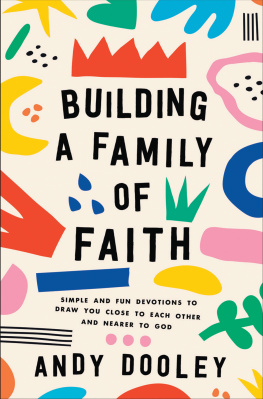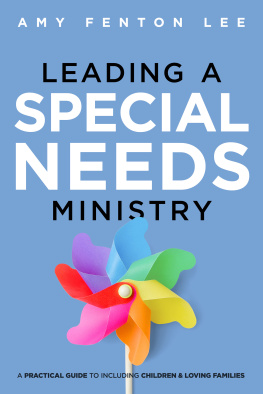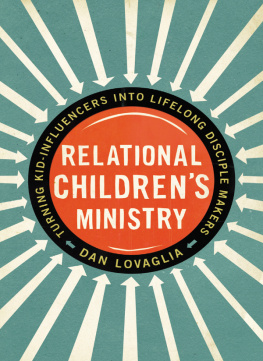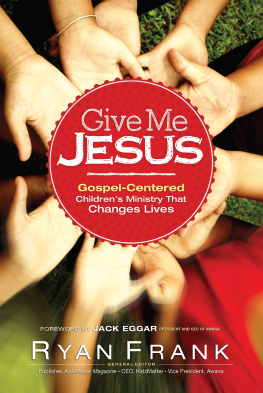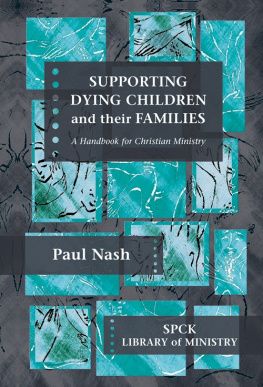
The Context of Family Ministry
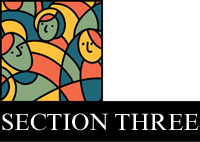
The Processes of Family Life
10

Family Interaction
W e have looked at the ecological, sociological and cultural contexts for family life, and at the processes by which families develop and change over time. With this chapter, we turn attention more to the interior life of families, how family members communicate with one another, solve problems, manage anger, and create both intimacy and individual privacy. The structure of a familytwo biological parents, a single parent, adoptive relationships or a remarriageis much less important to the well-being of families than these ways of relating to one another (Lansford, Ceballo, Abbey & Steward, 2001).
We begin with family communication, which is defined most simply as the process used by persons to provide information to one another. I had been working on this chapter all morning and then went to the grocery store. I stood with my back turned to the grocery store cashier and, stooping and turning, methodically put the green beans, tomato sauce and boxes of pasta on the conveyor belt. I was thinking about this chapter, and it dawned on me that we often try to communicate with family members like we check our groceries through the checkout lane at the store. Often with our backs turned to one another we unload our thoughts into the air toward our partners, assuming that the can of green beans for $1.20 we place on our end of the conveyor belt will get to the partner, who will tap in $1.20, registering the message just as we meant to send it. But communication is not green beans.
Parents learn the subtleties of messages communicated by different kinds of crying in an infant. Adults and children learn the meaning of fleeting facial expressions, gestures and tones of voice. Communication is more than a set of skills that apply in every interpersonal situation; it is a process of relating that is unique in every family system. We communicate very differently with our families than we do with a colleague at work or a stranger standing in line at the grocery store.
Communication occurs when we create symbols and put them in some medium through which others can perceive them and make sense of them. Thus, communication involves (1) the creation of symbols, (2) the medium for symbols, (3) the cognitive processes by which those symbols are created and interpreted, and (4) the relationship between symbols and the reality to which they refer (Fitzpatrick & Ritchie, 1993). Symbols can be words, gestures, sounds (sighs, laughter) or facial expressions. The medium may be a face-to-face conversation, a phone conversation, a note or a text message.
Symbols are complex and have to be interpreted. For example, the meaning of the words (symbols) Arent you a piece of work! depends a great deal on the context and the way in which the words are communicated. If said in a lilting tenor through a broad smile by a parent to a child when opening a straight-A grade card, those words mean something quite different than when said from a scowling face accompanied by parental hands on hips in a living room cluttered with toys. Context contributes to the meaning, either strengthening or weakening it, if not altering the meaning entirely. I love you whispered in a moment of sexual intimacy carries a different connotation than I love you said as the opening words of forgiveness when one has hurt the other.
Types of Communication
Communication carries two types of information: (1) information about the environment and (2) information about the interpersonal relationship. Communication about the environment usually takes place through words, whether spoken or written, such as Were out of milk; can you stop and get some? or I have to work overtime tonight; go ahead and eat without me. Communication about the relationship can also take place through words, such as I love you so much or I am so angry, but the recipient relies much more on nonverbal behaviors to interpret the words. Some of these nonverbal behaviors are vocal, such as the tone of voice and inflection used in saying the words. Words can be shouted or whispered, shrill or carefully and evenly spoken, drawn out in a whine or said in staccato. Often, words are accompanied by physical behaviors as wellhugs, frowns, shaking heads, shrugged shoulders, hands held in control behind the back, facial muscles contracted in frowns or smiles or clenched jaws, all with a multitude of variations that have different meanings.
Relationship information may be communicated without words at all, simply by the use (or lack of use) of physical behaviors. For example, the silent staring at the television, refusing to give eye contact to an irate partner, is communication about the relationship. It may be interpreted as I dont care about what you are saying, or its opposite, I am too overwhelmed by you to allow myself to respond. There may be no words at all, but facial expressions or the touch of a hand says the information.
Communication usually involves both kinds of messages at the same time. Even the seemingly innocuous Were out of milk; can you stop and get some? can be said with thinly guised anger or frustration. The relationship message, if it were put into words, might be: I am so angry; you said you would take responsibility for the grocery shopping, but you let us run out of the basics. Youve let me down again.
Over time, families develop their own languages of both verbal and nonverbal behaviors. Certain words take on unique family meanings, as do the intricacies of nonverbal behavior. These become part of and express the family culture. Family communication often uses private symbols as means of recognition (e.g., a special whistle to locate one another in a crowded store) or as a means of marking the family relationship as special (e.g., pet names for one another). An outsider may misunderstand the meaning of such behaviors. Unfortunately, sometimes family members do as well. Because nonverbal behavior has to be interpreted, it may be interpreted differently by the receiver than the sender of information intended. The partner flooded by the intensity of the others anger, staring at the television to avoid contact, may be perceived by the other as not caring, when in fact, the partner is so anxious or angry that responding feels too dangerous.
Conflicts sometimes erupt in families because information is sent unintentionally, or a family member reads into words a message that was not what the sender intended at all. Family members become experts at reading one another. For example, an adult who comes in from work to prepare dinner in a kitchen still in shambles from the morning rush hour may feel frustrated and angry. The anger is a culmination of the days hassles, fatigue and a sense of being overwhelmed at the work at home still left to do. The anger is expressed in sighs, or banging cabinet doors, or simply silence. Family members, keenly tuned in to one another, may read this as frustration and anger directed at themand perhaps it is.
The development of a shared language and signal system in family members communicates shared identity. Over time, this system of communication becomes ever more nuanced. When families experience significant changes from without or within, family members often have to move back to a more explicit, verbal form of communication. Words and behaviors also change their meaning and purpose in relationships over time and can symbolize far more than their immediate message.



